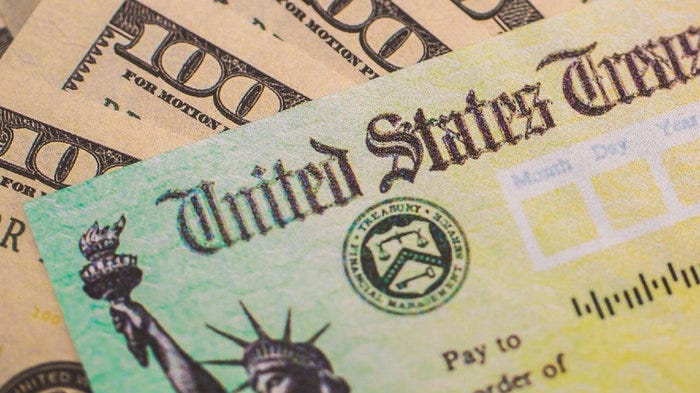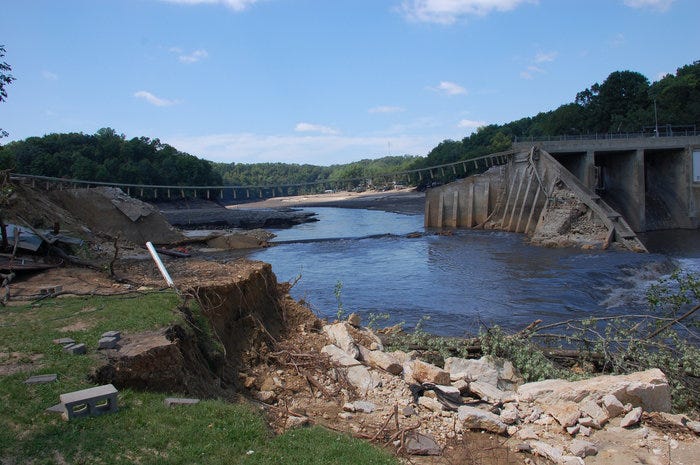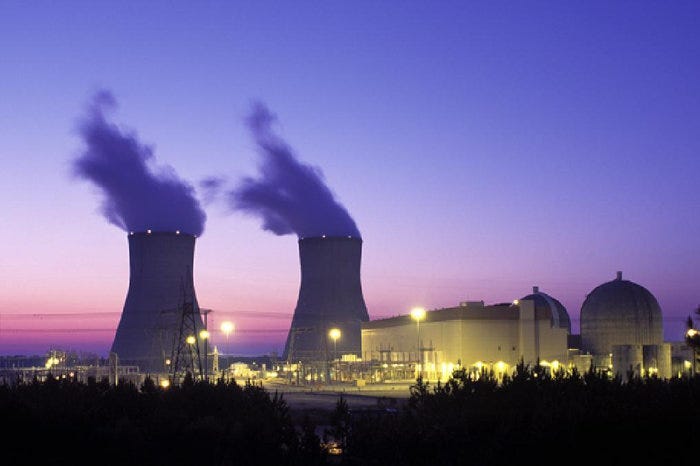This Summer Will Be Gangbusters For Travel
Surging costs are pushing some Americans to change travel plans, whether by reducing their number of trips or finding cheaper activities. But still, about 85 percent of Americans will likely travel this summer, according to the U.S. Travel Association.
Crowds are driving up demand as travel companies continue to deal with labor shortages. Fuel prices set record highs and have fallen only slightly. Rental car shortages continue and inflation spares no traveler's budget.
“Definitely every single category is more expensive now than it was this time last year,” Sally French, a travel rewards expert at NerdWallet told The Washington Post.
“We think this summer is going to be gangbusters for travel,” Marriott CEO Tony Capuano told last week.
The American Automobile Association reports that 2022 travel bookings are off to a much stronger start compared to this time last year, while the CEO of Expedia Group predicts this summer will be "the busiest travel season ever."
Marriott saw an 81 percent rise in first-quarter revenue compared to the same quarter a year ago as more leisure and business travelers got back on the road as Covid restrictions eased.
Despite concerns around inflation, Expedia CEO Peter Kern said he does not see travelers canceling plans because there’s so much pent-up demand following the pandemic.
“We haven’t seen any signs of consumers being impacted in terms of travel spend. We all know there were pent-up savings and underspend during Covid,” said Kern to CNBC.
Demand has driven the average daily rate at U.S. hotels up 40 percent compared to a year ago, according to hospitality analytics firm Smith Travel Research.
Higher Gas Prices Will Alter Some Plans
Higher gas prices historically haven’t stopped people from traveling altogether, said Ashley Schroeder, an assistant professor in tourism management at the University of South Carolina in Columbia, S.C.
“It changes where and how they travel,” she told The Wall Street Journal, for instance by taking fewer trips, driving to destinations closer to home, and spending less on recreation and dining.
AAA reports a national average price of $4.43 for a gallon of regular gas. After several weeks of steady declines through March and April, average gasoline prices in the US have risen sharply in May.
A survey from Bankrate.com in April found that 69 percent of Americans said they would take a vacation this summer. A March poll by Bank of America found that 62 percent found of respondents expect to travel more than usual in the next 12 months, while 41 percent found said they plan to make up for previously canceled travel in 2022 or 2023.
Airline fares rose 12.7 percent in February 2022 compared to last year, even though they're still down 14 percent compared to 2019, according to new data from the Bureau of Labor Statistics. The Airlines Reporting Corp. found the average ticket price for a roundtrip ticket jumped to $464 in February 2022 -- up from $409 in January.
The Economic Impact of Tourism
Tourism is widely regarded as a key sector for economic development. It creates jobs and increases the wealth of an area. It can and often does lead to improvements to the natural environment as well as man-made infrastructure, such as roads and waste-treatment plants. Tourism also provides an economic stimulus by allowing for diversification of employment and income potential.
But as we learned from the Covid-19 pandemic, the tourism industry can be quite vulnerable to disruptions. An estimated $500 billion loss in travel spending resulting from the pandemic cost the has tU.S. $1.1 trillion in economic output, according to the United States Travel Association. Prior to the pandemic, the U.S. travel industry experienced 10 straight years of growth.
In 2021, domestic business travel spending remained 56 percent below 2019 levels and international travel spending remained 78 percent below 2019 levels.
Prior to the pandemic, direct travel jobs accounted for 6 percent of the workforce, and total travel-supported jobs accounted for 11 percent of all jobs, but with the onslaught of Covid in 2020, direct travel jobs accounted for a disproportionate 35 percent of all jobs lost, according to USTA.
Employment in leisure and hospitality is still down by 1.4 million jobs, or 8.5 percent, since February 2020 despite the long string of robust monthly job gains.
Of the 428,000 jobs added in April to the U.S. Economy, a hefty 78,000 jobs were in the leisure and hospitality sector. Restaurants and bars added 43,800 jobs, hotels and other lodging businesses tacked on 22,300, and performing arts and spectator sports businesses added 13,300.
A report by the World Travel & Tourism Council in April stated the tourism sector is expected to create nearly 126 million new jobs within the next decade. The EIR report shows Travel & Tourism’s GDP is forecasted to grow at an average rate of 5.8 percent annually between 2022-2032, outstripping the 2.7 percent growth rate for the global economy, to reach US$ 14.6 trillion (11.3 percent of the total global economy).
The sector’s contribution to GDP is expected to grow a massive 43.7 percent to almost $8.4 trillion by the end of 2022, amounting to 8.5 percent of the total global economic GDP - just 13.3 percent behind 2019 levels. This will be matched by a boost in Travel & Tourism employment, which is expected to approach 2019 levels in 2023, only 2.7 percent below.
Did Too Much Stimulus Cause Inflation?
It was just two years ago. Millions of Americans had lost their jobs as the country shut itself down to slow the spread of a deadly virus. Policymakers and economists agreed that Americans needed help and so they quickly acted on it.
Congress passed a $2.2-trillion stimulus package in March 2020, followed by two more installments of COVID-19 relief later in 2020 and then again in 2021.
Now in hindsight, it has become clear that those trillions of dollars in stimulus came at a significant, unintended cost: inflation.
Many of the same policymakers and economists who called for action then are now asking whether the stimulus checks were a mistake. No doubt, the pandemic stimulus monies helped in some very big, tangible ways. Namely, it reduced poverty and kept people afloat during the early days of the pandemic.
According to the U.S. Census Bureau’s supplemental poverty measure, the stimulus payments moved 11.7 million people out of poverty in 2020 — a drop in the poverty rate from 11.8 to 9.1 percent. And the 2021 poverty rate was estimated to fall even further to 7.7 percent, per a July 2021 report from the Urban Institute.
However, there is also evidence that the stimulus likely stoked higher and higher prices for the very people it was intended to help. Though global supply chain issues (and, more recently, the war in Ukraine) have been significant drivers of inflation, the divergence between U.S. and European inflation suggests there’s more to it than that.
A recent analysis from researchers at the Federal Reserve Bank of San Francisco found that the stimulus may have raised U.S. inflation by about 3 percentage points by the end of 2021. Despite a 5.6 percent jump in wages year-over-year, 8.5 percent inflation in March 2022 meant that Americans saw a nearly 3 percent decrease in inflation-adjusted wages.
Back in early 2021, some economists raised the alarm about the size of the final round of stimulus — the American Rescue Plan, which was headlined by $1,400 direct payments to individual Americans — for its potential to overheat the economy and create an inflationary environment.
According to Thomas Philippon, a professor of finance at New York University’s Stern School of Business, the stimulus checks played a chief role in creating excessive demand, which in turn spurred inflation. “The demand boost was very large in the U.S., and the stimulus checks were a large part of it,” Philippon said.
But at the same time, many policymakers thought that the risk of putting too little money into the economy seemed greater than the risk of putting in too much.
One Bad Stump-Humper
After all the hype last year over the Rivian R1T pickup last year, the Ford Lightning is the stump-humping electric truck to want.
With dual-motor four-wheel drive and choice of a standard-range battery (230 miles) or extended-range (up to 320 miles), the Lightning is assembled in the new Rouge Electric Vehicle Center in Dearborn, Mich., adjacent to existing F-150 production.
The common silhouette of the F-150 belies what is under the hood. In the space where an engine would normally sit, there is instead the Mega Power Frunk: a 14.1-cubic-foot cargo box with a 400-pound capacity.
Unlike other automakers dipping their toes in electrification, Ford says it will not prioritize building profitable, high-spec units to the exclusion of its steady commercial clientele. The disruptively priced, entry-level Lightning Pro SR is an example of that. With the available $7,500 federal tax credit included, the Pro SR tally starts at $32,474.
For that, you get a generously equipped truck with a boxed-steel frame, four-wheel drive, 775 lb-ft of torque, locking rear differential, plus fun vinyl seats and floors. When fitted with the optional towing and trailering packages ($2,775 combined for Pro models), the Lightning can tow 10,000 pounds and haul 2,235 pounds. And you are still out the door for less than 40 grand.
Danger Rising
More than 2,200 dams built upstream from homes or communities are in poor condition across the United States, likely endangering lives if they were to fail, according to a recent analysis by the Associated Press.
The number of high-hazard dams in need of repairs is up substantially from a similar AP review conducted just three years ago.
There are several reasons for the increased risk. Long-deferred maintenance has added more dams to the troubled list. A changing climate has subjected some dams to greater strain from intense rainstorms. Homes, businesses and highways also have cropped up below dams that were originally built in remote locations.
"All of the sudden, you've got older dams with a lower design criteria that now can potentially cause loss of life if they fail," Del Shannon, an engineer who is president of the U.S. Society on Dams, told the AP.
"The number of deficient, high-hazard dams is increasing," he said, adding that without investment in upgrades, that number will continue to rise.
The actual number of high-hazard dams in poor or unsatisfactory condition is likely even higher than the AP's tally, although it's unclear because some states don't track such data and many federal agencies refuse to release that information.
Is the Office a Relic of the Past?
Airbnb CEO Brian Chesky poses an interesting question. "If the office didn't exist, I like to ask, would we invent it? And if we invented it, what would it be invented for?"
In an interview with TIME, Chesky said he believes the office is "an anachronistic form" that's "from a pre-digital age."
His comments follow Airbnb's announcement that it will let employees work remotely forever with no pay cut, citing the ability to widen its talent pool and noting the company had its most productive two-year period ever while working remotely.
"I think that the office as we know it, is over," he told TIME. "We can't try to hold on to 2019 any more than 1950. We have to move forward."
He continued: "Obviously, people are going to still go to hospitals and work, people are going to still go to coffee shops and work — those spaces make complete sense. But I think that for somebody whose job is on a laptop, the question is, well, what is an office meant to do?"
Shortly after announcing that Airbnb will go fully remote, Chesky said the company's careers page received more than 800,000 views.
In January, Chesky said he was "living on Airbnb," working from various cities across the US. In his TIME interview, he acknowledged there will still be some need for offices, but concluded "the office has to do something a home can't do."
"People will still go to offices, but it'll be for different purposes, for collaboration spaces," he said.
Chesky said 100 percent remotely can diversify hiring since employees can be based anywhere, but it can also make some employees feel isolated from their coworkers and company.
He said he believes there are flaws with the common hybrid work model of having employees work from the office three days a week, which companies like Google and Apple are using. Airbnb's alternative to this model is to have employees meet up in person roughly one week per quarter.
"My prediction is three days a week becomes two days a week, and two days a week becomes one day a week, and pretty soon are you really in a hybrid world, or are you mostly a remote world?" he said.
"People don't realize this two, three days a week thing is not super sustainable. People are going to realize, 'OK, let's be more intentional about when people gather. And let's gather for a week or two at a time.'"
Chinese Battery Company Eyes South Carolina and Kentucky
The world's largest battery maker is in the final stages of vetting sites in the United States to build electric vehicle batteries, according to Reuters.
Chinese-based Contemporary Amperex Technology Co. is in talks to open plants that would serve BMW AG and Ford Motor Co.
Potential sites include South Carolina and Kentucky, where those automakers have assembly plants, according to the two people, who asked not to be identified because the talks are ongoing and private. The investment would mark CATL's first production in the U.S.
BMW said in a statement that it was "intensively examining the possibility of establishing a battery factory" in North America and buying battery materials in the region. "We are in talks with several partners about this," the company said.
Ford, which declined to comment, announced plans last September to build two battery plants, jointly owned with SK, in Glendale, Kentucky. Ford also has two vehicle assembly plants in Louisville, Kentucky.
CATL has begun to expand outside of its home country. Its first announcement came this past April with plans for an 8 GWh battery plant in Germany. A week later, CATL announced a $6 billion investment to mine, manufacture, and recycle batteries in Indonesia, expanding its global reach further.
Ouch, Ouch, Ouch
I would be an advocate for nuclear power were it not for the fact that construction delays and gigantic cost overruns have historically been a given.
Case in point: Plant Vogtle, a nuclear power plant being built near Augusta, Ga., now projected to cost its owners more than $30 billion.
When approved in 2012, the project was estimated to cost $14 billion, with the first electricity being generated in 2016. Now the third reactor is set to begin operation in March 2023, and the fourth reactor is set to begin operation in December 2023.
A financial report from one of the owners on Friday clearly pushed the cost of Vogtle past that milestone, bringing its total cost to $30.34 billion. That amount doesn’t count the $3.68 billion that original contractor Westinghouse paid to the owners after going bankrupt, which would bring total spending to more than $34 billion.
Vogtle is currently the only nuclear plant under construction in the United States, and its costs could deter other utilities from building such plants, even though they generate electricity without releasing climate-changing carbon emissions.
The latest increase in the budget, by the Municipal Electric Authority of Georgia, wasn’t a surprise after lead owner Georgia Power Co. announced delays and $920 million in overruns on March 3.
Georgia Power’s costs only cover the 45.7 percent of the plant it owns, meaning that the cooperatives and municipal utilities that own the majority of the two-reactor project later update their financial projections as well.
MEAG, which owns 22.7 percent of Vogtle and provides power to city-owned utilities, raised its total cost forecast, including capital spending and borrowing costs, to $7.8 billion from the previous level of $7.5 billion.
Oglethorpe Power Corp., which provides power to 38 cooperatives in Georgia, owns 30 percent of Vogtle. In March bumped up its cost projects by $250 million to $8.5 billion.
The city of Dalton, which owns 1.6 percent, estimated its cost at $240 million in 2021.
Atlanta-based Southern Co., which owns Georgia Power, has been charging increasing shares of its cost overruns as shareholder losses, saying it’s unlikely that the Georgia Public Service Commission will approve adding amounts to the bills of Georgia Power’s 2.6 million customers.
But Oglethorpe, MEAG, and Dalton don’t have shareholders, meaning customers are fully exposed to overruns.
Just Click It
Americans flocked to10 cities last year and none are in New York or California CNBC
New generation of budget airlines aims to disrupt flying Axios
Powering electric cars: the race to mine lithium in America’s backyard Financial Times
Inside the Fearless Volunteer Convoy Supplying Ukrainian Fighters With Everything From Body Armor to Cigarettes Rolling Stone
An Appalachian town was told a bitcoin mine would bring an economic boom. It got noise pollution and an eyesore. Washington Post Copyfree Link
Prepare for arrival: Tech pioneer warns of alien invasion Venturebeat.com
Found value in what you have read? Subscribe to The Rising Tide here on Substack.
Dean Barber is the principal of Dallas-based BBA, offering consulting services to economic development organizations and companies for location analysis. We find practical and tactical solutions that work. www.barberadvisors.com












